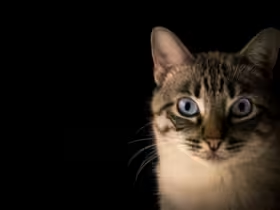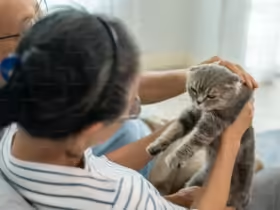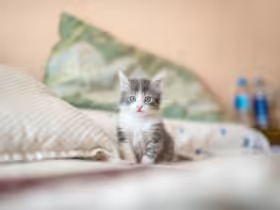Congestive Heart Failure (CHF) is a serious condition that affects the heart’s ability to pump blood efficiently. While CHF is more commonly discussed in human health, it can also impact our feline companions. Understanding the signs and knowing what steps to take can make a crucial difference in your cat’s health and well-being.
Understanding Congestive Heart Failure in Cats
Congestive Heart Failure occurs when the heart is unable to pump blood effectively, leading to a buildup of fluid in the lungs or other body parts. In cats, this condition is often a result of underlying heart diseases, such as hypertrophic cardiomyopathy (HCM), which is the most common form of heart disease in felines.
Causes of Congestive Heart Failure in Cats
- Hypertrophic Cardiomyopathy (HCM): The thickening of the heart muscle, which impairs its ability to pump blood effectively.
- Restrictive Cardiomyopathy (RCM): A condition where the heart muscle becomes rigid and less flexible, affecting the heart’s filling phase.
- Dilated Cardiomyopathy (DCM): Characterized by an enlarged and weakened heart chamber, though less common in cats than in dogs.
- Heartworm Disease: Though rarer in cats, it can cause severe heart issues and CHF.
- Congenital Heart Defects: Some cats are born with heart defects that can lead to CHF.
Symptoms of Congestive Heart Failure
Recognizing the symptoms of CHF is essential for prompt treatment. Here are the key signs to watch for:
- Difficulty Breathing: Rapid, labored breathing or panting, especially when resting or sleeping.
- Coughing: Persistent cough, often mistaken for a cold or other respiratory issue.
- Weakness or Lethargy: Reduced activity levels or reluctance to play or move.
- Decreased Appetite: A noticeable drop in food intake or sudden weight loss.
- Swollen Abdomen: Fluid accumulation in the abdomen, also known as ascites, which may make the belly appear distended.
- Pale or Bluish Gums: Poor oxygenation of blood leading to abnormal gum coloration.
- Increased Heart Rate: Elevated heart rate, which can be detected by a veterinarian.
What to Do When You Suspect Congestive Heart Failure
If you notice any of these symptoms in your cat, it is crucial to act quickly. Here’s what you should do:
1. Immediate Veterinary Consultation
Schedule an appointment with your veterinarian as soon as possible. If the symptoms are severe, such as difficulty breathing, consider an emergency visit to an animal hospital.
2. Diagnostic Testing
Your vet will likely recommend several tests to diagnose CHF:
- Physical Examination: To check for signs of fluid buildup and assess overall health.
- Chest X-rays: To visualize the heart and lungs and check for fluid accumulation.
- Echocardiogram (Ultrasound): To evaluate the heart’s structure and function.
- Electrocardiogram (ECG): To assess the heart’s electrical activity.
- Blood Tests: To identify underlying issues such as kidney disease or infections that might be contributing to the heart failure.
3. Treatment Options
Treatment will depend on the underlying cause and severity of CHF:
- Medications: Commonly prescribed drugs include diuretics to reduce fluid buildup, ACE inhibitors to ease the heart’s workload, and beta-blockers to manage heart rate and rhythm.
- Dietary Changes: Special diets low in sodium and rich in essential nutrients may be recommended to support heart health.
- Oxygen Therapy: In severe cases, providing supplemental oxygen may help your cat breathe more easily.
- Surgery: For some congenital defects or severe cases, surgical intervention may be necessary.
4. Home Care and Monitoring
After the initial treatment, managing a cat with CHF involves ongoing care:
- Regular Vet Check-ups: Follow your vet’s schedule for routine check-ups and monitoring.
- Medication Administration: Ensure you give medications as prescribed and observe for any side effects.
- Monitor Symptoms: Keep an eye on any changes in your cat’s condition and report them to your vet.
5. Lifestyle Adjustments
Make changes to your cat’s environment to support their health:
- Comfortable Sleeping Area: Provide a quiet, comfortable place where your cat can rest undisturbed.
- Controlled Activity: Avoid vigorous exercise and monitor your cat’s activity levels to prevent overexertion.
- Hydration and Nutrition: Ensure your cat has access to fresh water and a balanced diet suited to their condition.
When to Seek Emergency Care
Certain signs require immediate veterinary attention:
- Severe Difficulty Breathing: If your cat is struggling to breathe or has a bluish tint to their gums.
- Sudden Collapse: If your cat collapses or loses consciousness, seek emergency help immediately.
- Severe Swelling: Significant abdominal swelling or sudden changes in physical condition.










Leave a Reply